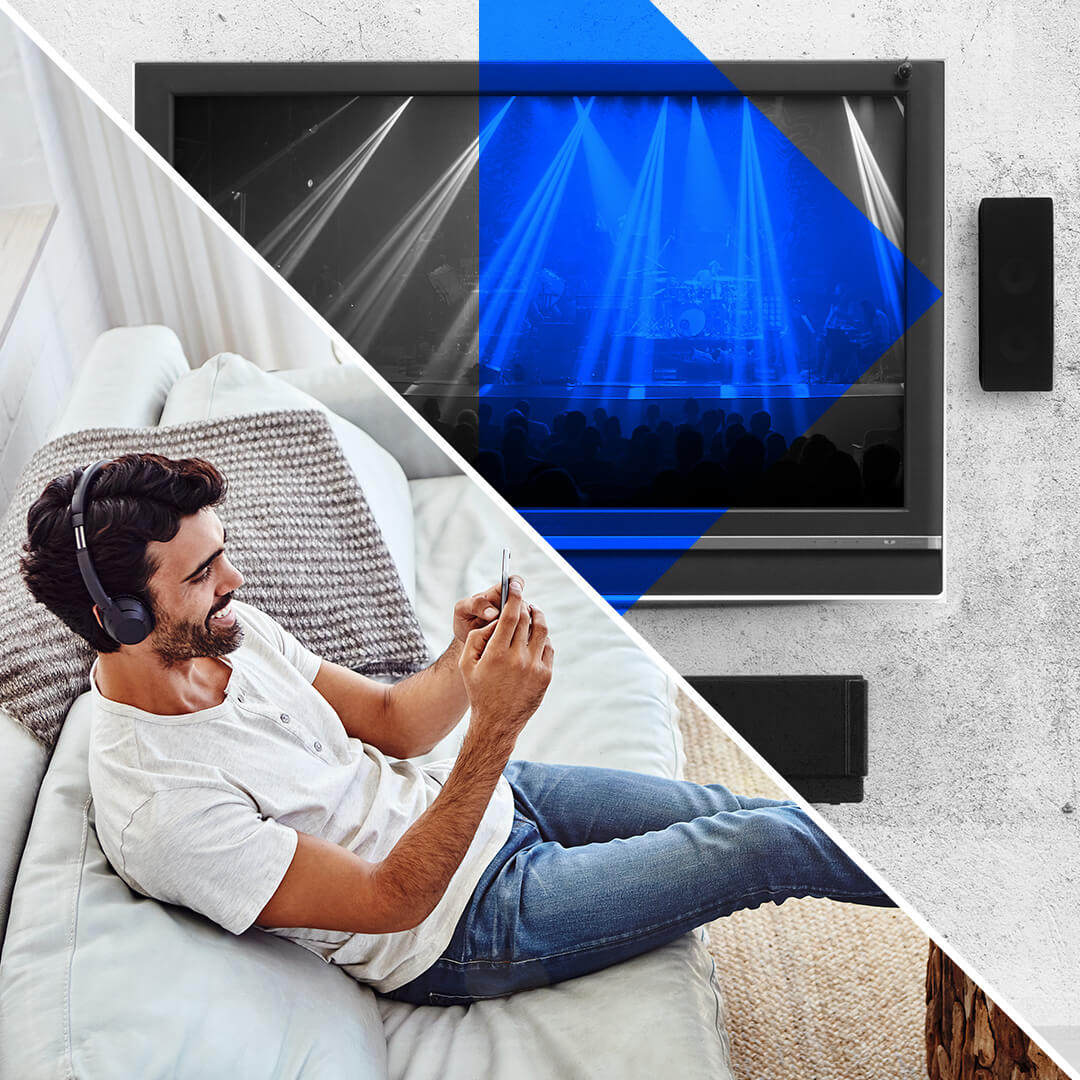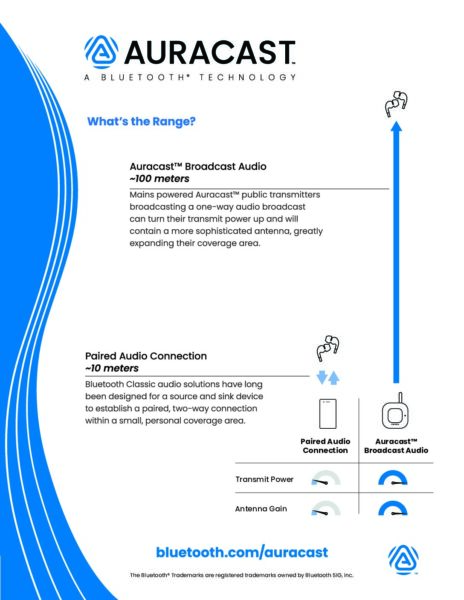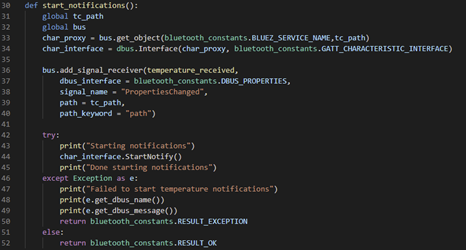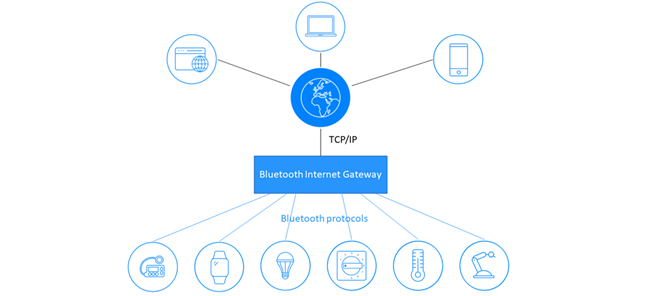20 Years of Bluetooth® technology has led to the creation of countless wireless innovations that have impacted the lives of billions of people around the world. Since its formal inception in 1998, Bluetooth technology has expanded considerably to meet the wireless connectivity needs of a diverse developer community.
“Bluetooth has found its way into almost every possible application.”
Multiple Ways to Connect
“Bluetooth has found its way into almost every possible application,” said Lou Frenzel, communications technology editor for Electronic Design. “Home audio, automotive, and smartphones are the biggest markets. Bluetooth is also big in IoT (Internet of Things). Building automation, industrial, and smart cities are other adopters.”
From simple point-to-point connections for streaming audio between a smartphone and speaker to broadcast connections that enable way-finding services in an airport to mesh connections that support large-scale building automation — you can use Bluetooth technology to support a range of topologies, picking the option that best suits your specific wireless needs.

Audio Streaming
The Bluetooth point-to-point network topology is a trusted global solution for establishing one-to-one (1:1) device communications. Point-to-point connectivity on Bluetooth® Basic Rate/Enhanced Data Rate (BR/EDR) is where it all started for Bluetooth technology. This topology is optimized for audio streaming and is ideal for use in a wide range of wireless devices, such as speakers, headsets, and hands-free car kits.
For years, Bluetooth innovations has been synonymous with wireless audio and entertainment, forever changing the way we consume media and experience the world. Bluetooth technology makes getting real-time audio via a wireless connection both routine and convenient. It’s not surprising that ABI Research expects several million Bluetooth wireless devices to ship in 2018.
Data Transfers
The point-to-point topology on Bluetooth® Low Energy is optimized for data transfer and is well suited for connected device solutions such as fitness trackers, health monitors, and PC peripherals and accessories.
“The Bluetooth technology is the main standard for fitness trackers, smartwatches, and medical devices made by companies such as Sony, Samsung, and Nike,” said Chuck Martin, editor of the IoT Daily at MediaPost.
Bluetooth technology is connecting everything from common household items to health and wellness devices that are changing the face of healthcare. Whether it’s sports and fitness, health and wellness, or creating a connected home, Bluetooth enabled solutions help transform the IoT vision into reality.

Location Services
The Bluetooth broadcast network topology establishes one-to-many (1:m) device communications. Bluetooth Low Energy broadcasting powers localized information sharing and is ideal for beacon solutions like those that provide space utilization, point-of-interest (POI) information, item finding, and way-finding services.
“More recently, the technology [beacons] has emerged as a key component in the smart building revolution underway in the office, hotel, and residential markets,” said Konrad Putzier from The Real Deal.
Using Bluetooth technology, you can enable indoor positioning and location-based services via a building-wide network of sensors and beacons. These services are becoming popular across retail, enterprise, and environments and have proven to significantly enhance staff and visitor experiences while extending the long-term return on smart building investments.
Location services are also making a significant impact in smart industry. Bluetooth enabled indoor positioning and enterprise wearables can improve material management, asset tracking, and process flow to help enhance operational efficiency.

Device Networks
Bluetooth® Mesh is an ideal solution for creating many-to-many (m:m) device communications. The mesh network topology on Bluetooth Low Energy lets you build large-scale device networks that are tailor-made for building automation, sensor network, and any solution where you need tens, hundreds, or thousands of devices to reliably and securely communicate with one another.
“The technology’s [Bluetooth Mesh] reach in both home and commercial installations of connected devices is expanding by the day,” said Skip Ashton, Silicon Labs VP of Software, in his guest article for IoT Evolution.
With Bluetooth technology, you can create building automation solutions that harness energy savings, lower operating costs, and improve the life cycle of a building’s core systems — from HVAC to lighting to security. Bluetooth sensor networks deployed in a factory enable real-time monitoring of system performance and tolerances, creating intelligent machines and whole manufacturing lines that can predict and solve problems before they arise. With whole-building coverage now a possibility, Bluetooth technology is making intelligent building automation at scale a reality.
“The Bluetooth community continues to grow and extend as the technology enhances its specification in order to retain its prominent position in future markets including the IoT.”
The Global Standard for Connectivity
Whether you’re streaming audio, transferring data, broadcasting information, or creating a network of devices, Bluetooth enabled solutions provide a secure way for you to connect, and — thanks to the tireless efforts and groundbreaking innovations created by Bluetooth member companies — it’s been doing so for more than 20 years.
“Over the last 20 years, Bluetooth has been pivotal in enabling compelling customer experiences. It has been one of the key technologies underpinning the consumer wireless revolution,” said Stuart Carlaw, Chief Research Officer at ABI Research. “The Bluetooth community continues to grow and extend as the technology enhances its specification in order to retain its prominent position in future markets including the IoT.”
Get access to the latest forecasts and trends in Bluetooth audio streaming, data transfer, location services, and device networks in the Bluetooth Market Update.
![]()
FEATURED DOWNLOAD
Enhancing Bluetooth Location Services with Direction Finding
A new Bluetooth direction finding feature allows devices to determine the direction of a Bluetooth signal, thereby enabling the development of Bluetooth proximity solutions that can understand device direction as well as Bluetooth positioning systems that can achieve down to centimeter-level location accuracy.










![1970363214 26a65d3b4501a03ccb07d0573676bdb810f2418b1f66c382130b616b3dd8efaa d [1]](https://www.bluetooth.com/wp-content/uploads/2025/01/1970363214-26a65d3b4501a03ccb07d0573676bdb810f2418b1f66c382130b616b3dd8efaa-d_1-660x371.jpg)










![2312 CES Handout Images FINAL existing pdf 464x600[1]](https://www.bluetooth.com/wp-content/uploads/2024/01/2312_CES_Handout-Images_FINAL-existing-pdf-464x6001-1.jpg)


















